 Syfy airs the 77th and final episode of the science fiction series Eureka, starring Colin Ferguson, Salli Richardson-Whitfield, and Joe Morton. Matt Frewer (Max Headroom), Debrah Farentino (Earth 2), James Callis (Battlestar Galactica), Felicia Day (Mystery Science Theater 3000), Tembi Locke (Sliders), Wil Wheaton (Star Trek: The Next Generation), and Grant Imahara (Mythbusters) guest star in the series finale.
Syfy airs the 77th and final episode of the science fiction series Eureka, starring Colin Ferguson, Salli Richardson-Whitfield, and Joe Morton. Matt Frewer (Max Headroom), Debrah Farentino (Earth 2), James Callis (Battlestar Galactica), Felicia Day (Mystery Science Theater 3000), Tembi Locke (Sliders), Wil Wheaton (Star Trek: The Next Generation), and Grant Imahara (Mythbusters) guest star in the series finale.
More about Eureka in the LogBook and theLogBook.com Store
Eureka now streaming on Amazon Prime

 Having already been donated to the Smithsonian Air & Space Museum in 1985, Space Shuttle Enterprise, a test vehicle not built to spaceflight specs, is removed from the custom-made hangar at the Smithsonian and prepared for re-gifting. With NASA donating the space-flown shuttle Discovery to the Smithsonian, Enterprise will now become a major display at New York City’s Intrepid Museum, based on the retired aircraft carrier U.S.S. Intrepid. For the first time in nearly 20 years, Enterprise is loaded onto one of the modified Boeing 747s from which it made its in-atmosphere test flights in 1977 and is transported to New York.
Having already been donated to the Smithsonian Air & Space Museum in 1985, Space Shuttle Enterprise, a test vehicle not built to spaceflight specs, is removed from the custom-made hangar at the Smithsonian and prepared for re-gifting. With NASA donating the space-flown shuttle Discovery to the Smithsonian, Enterprise will now become a major display at New York City’s Intrepid Museum, based on the retired aircraft carrier U.S.S. Intrepid. For the first time in nearly 20 years, Enterprise is loaded onto one of the modified Boeing 747s from which it made its in-atmosphere test flights in 1977 and is transported to New York.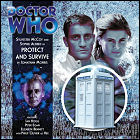 Big Finish Productions
Big Finish Productions  Actress Mary Tamm, who appeared in a single (but very high-profile) season of Doctor Who as the first incarnation of the Time Lady Romana, dies at the age of 62 after a battle with cancer. Having revived her version of the Romana character in recent years for Big Finish Productions’ Doctor Who audio stories (and the spinoff series Gallifrey), Tamm has remained popular with fans and has also recently completed her autobiography. Several days later, mere hours after delivering a eulogy at her memorial service, her husband of 34 years, Marcus Ringrose, also dies of a heart attack.
Actress Mary Tamm, who appeared in a single (but very high-profile) season of Doctor Who as the first incarnation of the Time Lady Romana, dies at the age of 62 after a battle with cancer. Having revived her version of the Romana character in recent years for Big Finish Productions’ Doctor Who audio stories (and the spinoff series Gallifrey), Tamm has remained popular with fans and has also recently completed her autobiography. Several days later, mere hours after delivering a eulogy at her memorial service, her husband of 34 years, Marcus Ringrose, also dies of a heart attack.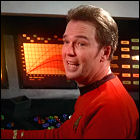 The
The 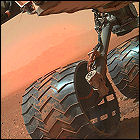 Surviving a previously untested landing method involving a rocket-firing sky crane, NASA’s Curiosity rover (or, more formally, the Mars Science Laboratory) lands safely on Mars, at the base of a mountain near Gale Crater. The first images from the surface arrive within seconds of landing, confirming the safe delivery of NASA’s latest mobile Mars explorer. The landing is especially suspenseful due to the “seven minutes of terror” – the one-way time for a signal to reach Earth from Mars – and the fact that the entire reentry and landing procedure takes 14 minutes.
Surviving a previously untested landing method involving a rocket-firing sky crane, NASA’s Curiosity rover (or, more formally, the Mars Science Laboratory) lands safely on Mars, at the base of a mountain near Gale Crater. The first images from the surface arrive within seconds of landing, confirming the safe delivery of NASA’s latest mobile Mars explorer. The landing is especially suspenseful due to the “seven minutes of terror” – the one-way time for a signal to reach Earth from Mars – and the fact that the entire reentry and landing procedure takes 14 minutes. The internet-based fan film Star Trek: Phase II releases a short vignette episode,
The internet-based fan film Star Trek: Phase II releases a short vignette episode, 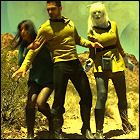 The
The 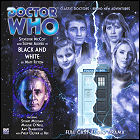 Big Finish Productions
Big Finish Productions 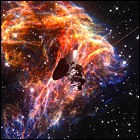 35 years after its departure from Earth, NASA’s Voyager 1 space probe registers major changes in its environment, including a large spike in radiation readings believed to indicate the presence of interstellar cosmic radiation. Some scientists claim that these changes in Voyager 1’s surroundings meet the expected criteria for space beyond the influence of Earth’s sun, making Voyager 1 the first man-made craft to reach interstellar space; others, including former Voyager project scientists, disagree with that assessment. Voyager 1 has no further planetary stops, and is expected to pass within two light years of the star Gliese 445 in 40,000 years.
35 years after its departure from Earth, NASA’s Voyager 1 space probe registers major changes in its environment, including a large spike in radiation readings believed to indicate the presence of interstellar cosmic radiation. Some scientists claim that these changes in Voyager 1’s surroundings meet the expected criteria for space beyond the influence of Earth’s sun, making Voyager 1 the first man-made craft to reach interstellar space; others, including former Voyager project scientists, disagree with that assessment. Voyager 1 has no further planetary stops, and is expected to pass within two light years of the star Gliese 445 in 40,000 years. American astronaut – and the first human being to walk on the surface of the moon – Neil Armstrong dies at the age of 82. On July 20th, 1969, he took the “giant leap” onto another world that instantly made him perhaps the most famous citizen of the 20th century – moreso than the Beatles, more than Hitler or Churchill, more than any actor. That century will be defined by the exploration of the moon forever, and as many men walked on its surface, Armstrong’s will be the name that is forever associated with that exploration.
American astronaut – and the first human being to walk on the surface of the moon – Neil Armstrong dies at the age of 82. On July 20th, 1969, he took the “giant leap” onto another world that instantly made him perhaps the most famous citizen of the 20th century – moreso than the Beatles, more than Hitler or Churchill, more than any actor. That century will be defined by the exploration of the moon forever, and as many men walked on its surface, Armstrong’s will be the name that is forever associated with that exploration. The first of a
The first of a 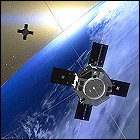 The Radiation Belt Storm Probes mission launched by NASA begins activating sensors just a few days after liftoff, weeks ahead of schedule, just in time to reveal a finding that forces a rethink of over half a century of widely-accepted science. The probes find that, in response to the recent eruption of a solar prominence, the two Van Allen radiation belts discovered in 1958 by Explorer 1 have expanded to include a third belt, which traps and repels additional solar radiation back into space. The third radiation belt dissipates after four weeks, and scientists begin rethinking their theories on Earth’s magnetosphere.
The Radiation Belt Storm Probes mission launched by NASA begins activating sensors just a few days after liftoff, weeks ahead of schedule, just in time to reveal a finding that forces a rethink of over half a century of widely-accepted science. The probes find that, in response to the recent eruption of a solar prominence, the two Van Allen radiation belts discovered in 1958 by Explorer 1 have expanded to include a third belt, which traps and repels additional solar radiation back into space. The third radiation belt dissipates after four weeks, and scientists begin rethinking their theories on Earth’s magnetosphere. The 787th episode of Doctor Who airs on BBC1 (the 89th episode since the series’ revival).
The 787th episode of Doctor Who airs on BBC1 (the 89th episode since the series’ revival).  NASA’s Dawn unmanned space probe fires up its ion propulsion system, breaking its orbit around the large asteroid Vesta. Having orbited and mapped Vesta since 2011, Dawn must now survive a nearly-three-year trip through the main asteroid belt to reach the largest body in that region, Ceres. Successful arrival at Ceres, planned for 2015, would make Dawn the first unmanned spacecraft to have orbited two bodies in the solar system.
NASA’s Dawn unmanned space probe fires up its ion propulsion system, breaking its orbit around the large asteroid Vesta. Having orbited and mapped Vesta since 2011, Dawn must now survive a nearly-three-year trip through the main asteroid belt to reach the largest body in that region, Ceres. Successful arrival at Ceres, planned for 2015, would make Dawn the first unmanned spacecraft to have orbited two bodies in the solar system. Soundtrack specialty label Intrada releases a third volume of Stu Phillips’ episode soundtracks from the TV Series
Soundtrack specialty label Intrada releases a third volume of Stu Phillips’ episode soundtracks from the TV Series 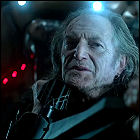

 Sony releases the
Sony releases the 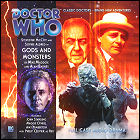 Big Finish Productions
Big Finish Productions  Big Finish Productions
Big Finish Productions 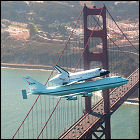 NASA donates the retired Space Shuttle Endeavour, stripped of working engines and other vital equipment, to the California Science Center in Los Angeles. The last shuttle to be built, construction on Endeavour began in 1988 from spare parts to replace the destroyed Challenger; Endeavour lifted off for the first time in 1992, ultimately flying 25 missions, including many of the International Space Station construction missions. This also marks the final flight of the modified Boeing 747 shuttle carrier aircraft, which flew for the first time in 1977.
NASA donates the retired Space Shuttle Endeavour, stripped of working engines and other vital equipment, to the California Science Center in Los Angeles. The last shuttle to be built, construction on Endeavour began in 1988 from spare parts to replace the destroyed Challenger; Endeavour lifted off for the first time in 1992, ultimately flying 25 missions, including many of the International Space Station construction missions. This also marks the final flight of the modified Boeing 747 shuttle carrier aircraft, which flew for the first time in 1977.
 The
The 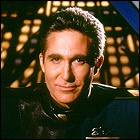 Michael O’Hare, who starred in the 1993 pilot movie and the first full season (1994) of the science fiction series Babylon 5, dies of complications from a heart attack he suffered the week before. An accomplished stage actor who made infrequent forays into television, O’Hare had been out of the public eye (including the science fiction convention circuit) for several years.
Michael O’Hare, who starred in the 1993 pilot movie and the first full season (1994) of the science fiction series Babylon 5, dies of complications from a heart attack he suffered the week before. An accomplished stage actor who made infrequent forays into television, O’Hare had been out of the public eye (including the science fiction convention circuit) for several years.
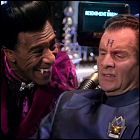 The
The 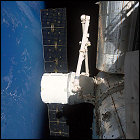 Having successfully demonstrated an unmanned cargo vehicle to make supply runs to the International Space Station, SpaceX launches the first Dragon capsule to the ISS under its new commercial resupply contract with NASA. The flight is not without difficulties: one of the nine engines of the Falcon 9 booster’s first stage shuts down in flight without impacting the Dragon capsule’s ability to reach the right orbit, but a secondary payload – a commercial satellite to be launched from the Falcon’s upper stage – is stranded in the wrong orbit and falls back into Earth’s atmosphere in days. NASA and SpaceX begin a joint investigation into the mishap, while the Dragon capsule docks with the ISS and remains in orbit for nearly three weeks as Expedition 33 crew members unload new cargo and stow items for return to Earth aboard the capsule, which will be recovered on Earth after splashdown in the Pacific Ocean.
Having successfully demonstrated an unmanned cargo vehicle to make supply runs to the International Space Station, SpaceX launches the first Dragon capsule to the ISS under its new commercial resupply contract with NASA. The flight is not without difficulties: one of the nine engines of the Falcon 9 booster’s first stage shuts down in flight without impacting the Dragon capsule’s ability to reach the right orbit, but a secondary payload – a commercial satellite to be launched from the Falcon’s upper stage – is stranded in the wrong orbit and falls back into Earth’s atmosphere in days. NASA and SpaceX begin a joint investigation into the mishap, while the Dragon capsule docks with the ISS and remains in orbit for nearly three weeks as Expedition 33 crew members unload new cargo and stow items for return to Earth aboard the capsule, which will be recovered on Earth after splashdown in the Pacific Ocean. Frontier Records releases the
Frontier Records releases the 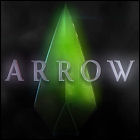 The first episode of Arrow, a modern-day reboot of DC Comics’ Green Arrow superhero, premieres on the CW, starring Stephen Amell. The series has been developed for TV by Greg Berlanti, creator of past TV successes including Everwood and Eli Stone, and will lead to a string of successful series developed by Berlanti around popular DC characters, which will also lead to a successful “shared universe” of TV comics adaptations frequently referred to by fans as the Arrowverse.
The first episode of Arrow, a modern-day reboot of DC Comics’ Green Arrow superhero, premieres on the CW, starring Stephen Amell. The series has been developed for TV by Greg Berlanti, creator of past TV successes including Everwood and Eli Stone, and will lead to a string of successful series developed by Berlanti around popular DC characters, which will also lead to a successful “shared universe” of TV comics adaptations frequently referred to by fans as the Arrowverse.